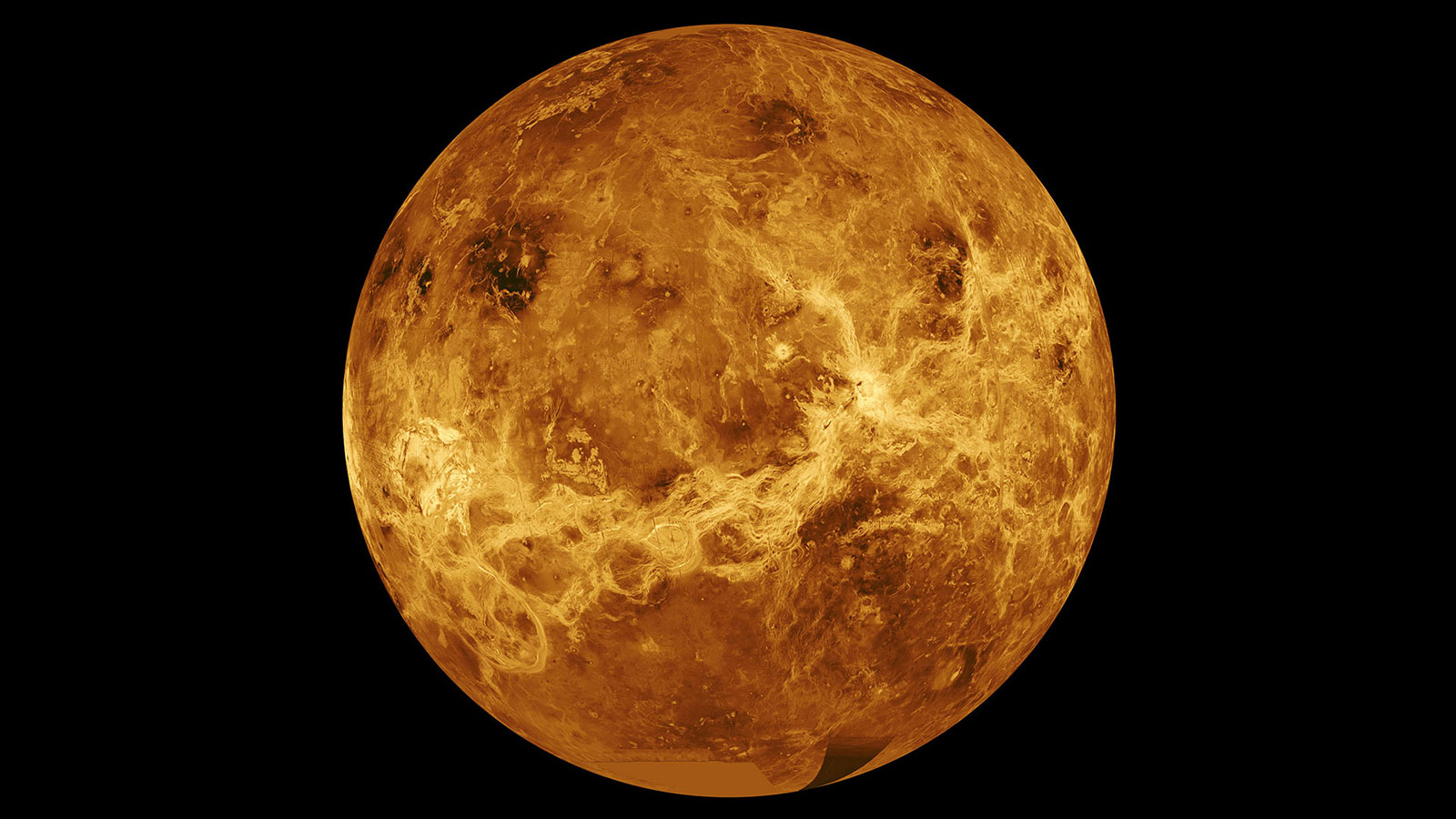NASA is ending its 30-year Venus drought with two new missions
DAVINCI+ and VERITAS will attempt to answer how and why the second planet from the sun became the hellscape it is today.

The last time NASA launched a dedicated mission to Venus was in 1989. The Magellan orbiter spent four years studying Venus before it was allowed to crash into the planet’s surface. For almost 30 years, NASA has given Venus the cold shoulder.
All of that is about to change with a double feature. NASA administrator Bill Nelson announced Wednesday that the agency has selected two new missions to explore Venus: DAVINCI+ and VERITAS. In the words of planetary scientist Paul Byrne of North Carolina State University, “We have gone from a drought to a banquet.”
It’s honestly a bit hard to understand why NASA has not been more bullish about going back to Venus in such a long time. It’s true that Venus has always been a tough bugger to explore because of its hostile environment. The surface boasts temperatures of up to 471 °C (hot enough to melt lead) and ambient pressures 89 times those on Earth. The atmosphere is 96% carbon dioxide. And the planet is covered in thick clouds of sulfuric acid. When the Soviet Union landed the Venera 13 probe on the planet in 1982, it lasted 127 minutes before it was destroyed.
And yet, we know that conditions there weren’t always so harsh! Venus and Earth are known to have started as similar worlds with similar masses, and both reside in the habitable zone of the sun (the region where it’s possible for liquid water to exist on a planet’s surface). But only Earth became habitable, while Venus turned into a hellscape. Scientists want to know why. These new missions, says Byrne, “will help us fundamentally answer the question why is our sibling planet not our twin?”
In just the last year, another huge development has encouraged NASA to take Venus exploration more seriously: the prospect of finding life. In September 2020, scientists announced that they had potentially discovered phosphine gas—which is known to be produced by biological life—in Venus’s atmosphere. Those findings came under enormous scrutiny in the ensuing months, and now it’s not quite clear whether the phosphine readings were real. But all the excitement fostered discussion to the effect that finding extraterrestrial life was perhaps possible on Venus. This tantalizing new prospect put Venus at the forefront of the public’s mind (and possibly the minds of legislators who approve NASA’s budget).
The selection of both new missions “is a very clear statement from NASA to the Venus community to say, ‘We see you, we know you’ve been neglected, and we’re going to make that right,’” says Stephen Kane, an astronomer at the University of California, Riverside. “It’s an incredible moment.”
DAVINCI+ is short for Deep Atmosphere Venus Investigation of Noble gases, Chemistry, and Imaging Plus. It’s a spacecraft that will plunge into the dense, hot atmosphere of Venus and parachute down to the surface. On its 63-minute descent, it will use multiple spectrometers to study the atmosphere’s chemistry and composition. It will also image the Venusian landscape to better understand its crust and terrain (and if successful, it would be the first probe to photograph the planet during descent).
VERITAS, short for Venus Emissivity, Radio Science, InSAR, Topography, and Spectroscopy, is an orbiter designed to carry out other research from a safer distance. It would use radar and near-infrared spectroscopy to peer below the planet’s thick clouds and observe the geology and topography of its surface.
The two missions each have a distinct focus for their investigations: DAVINCI’s is to study the history and evolution of the atmosphere, climate, and water on Venus while VERITAS is meant to help scientists learn about Venus’s innards—its volcanic and tectonic history, its mass and gravitational field, its geochemistry, and to what extent the planet is still seismically active.
And the fact that both missions are expected to travel to Venus around the same time—between 2028 and 2030—means they can complement each other. Kane, for instance, points out that a planet’s habitability is guided by a number of factors, including plate tectonics and subduction—a process that recycles carbon from the atmosphere into the planet’s interior—and its atmospheric chemistry. While VERITAS can provide unprecedented observations of the surface and tell us whether carbon recycling is happening, DAVINCI+ will probe the atmospheric chemistry directly. Together, he says both missions are “absolutely perfect” for providing a clear picture for how these processes play into the habitable potential of Venus (or lack thereof).
Still, these missions are only a prelude to what Byrne hopes will be a larger exploration program devoted to studying Venus in the same way we study Mars—through multiple missions that can explore its surface, atmosphere, and orbit at the same time. “One mission isn’t enough—two missions aren’t enough!” he says. DAVINCI+ and VERITAS could help lay the groundwork for such a program many decades down the road. Maybe bringing back a sample from Venus, as we’re poised to do soon with Mars, is possible within our lifetimes.
Deep Dive
Space
The search for extraterrestrial life is targeting Jupiter’s icy moon Europa
NASA’s Europa Clipper mission will travel to one of Jupiter's largest moons to look for evidence of conditions that could support life.
How to safely watch and photograph the total solar eclipse
The solar eclipse this Monday, April 8, will be visible to millions. Here’s how to make the most of your experience.
How scientists are using quantum squeezing to push the limits of their sensors
Fuzziness may rule the quantum realm, but it can be manipulated to our advantage.
Stay connected
Get the latest updates from
MIT Technology Review
Discover special offers, top stories, upcoming events, and more.